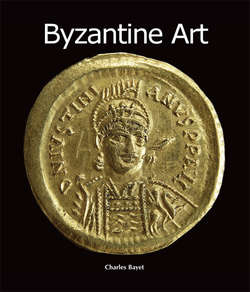Читать книгу Byzantine Art - Charles Bayet - Страница 2
На сайте Литреса книга снята с продажи.
Introduction
ОглавлениеArch of Constantine, 312–315.
Marble, 21 × 25.7 × 7.4 m.
Rome.
Byzantine art has been alternately strongly attacked and strongly advocated. For many years, critics’ only references to the movement produced the most unflattering epithets. The word itself, Byzantine, which refers to both painting and politics, used to arouse immediate ire in the elite artistic circles of the nineteenth century. It had become established that this term was used to refer to a type of art that had created nothing but unsightly, unpleasing works and which, condemned to stagnation from its very conception, had neither progressed nor changed.
Later on, those who attempted to defend the unappreciated era often did its reputation harm with their excessive zeal. Before it had even been clearly defined what was to be understood by the term “Byzantine”, these overly active panegyrists claimed to recognise its influence in nearly every country and on every monument in the West. Losing its contemptuous nuance, the term “Byzantine” was becoming very vague and, above all, very elastic. Everyone believed himself to have the right to use it according to his own fancy. The term thus accompanied half of the works of the Middle Ages; as for the others, experts strained to recognise at the very least the influence of the Greek masters. In this way, other works were assimilated under the Byzantine banner and declared its vassals.
These invasions of style provoked some resistance. In France, Italy, and Germany, art historians affirm that, before even the twelfth or thirteenth century, the West had produced its own local schools whose existence must not be forgotten. This reaction to the older civilisation’s artistic style was quite strong, at times excessive. In Italy, one encountered scholars who refused to see Byzantine influence anywhere. Some, unfamiliar with the history and monuments of the East, even claimed that the artistic principles that developed in the Mediterranean during the fourth century were actually bequeathed to the Byzantine Empire by the Italians.
One point is worth noting: detractors and apologists have often followed the same method. Before speaking of the relationship between Byzantine art and other styles, many do not take the pains to study it in its Context and in its works. Perhaps it would have been better to reject the word “Byzantine”, which is not precise and which was exploited to such a degree, and rather to discuss neo-Hellenistic art or Greek art of the Middle Ages; however it seems useless to go against convention, words take on the value, above all, by the meaning given them.
